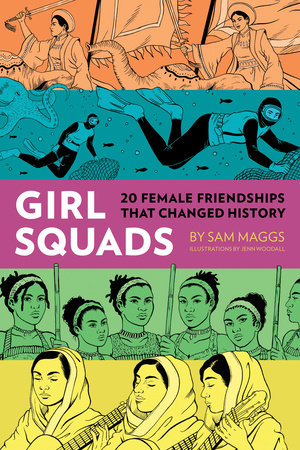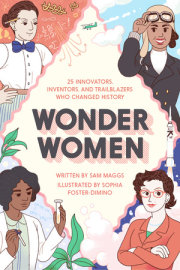Introduction
As girls and women, we live in a world that is incredibly difficult to navigate. And although many of us have caring, sympathetic men in our lives, there are some things—no matter how many times we explain them—that they’ll never fully understand: what it’s like to always wonder if you’re being paid as much as the guy at the next desk whose work isn’t even as good as yours; how it feels to walk home at night with your keys between your knuckles, wondering if your facial expression is tough enough to scare off assailants but not so tough as to invite aggression; the punch to the gut when someone on the internet threatens you with sexual violence just because you expressed an opinion about a superhero movie. Tell a guy about these and he might just stare at you; tell a gal and she’ll
get it. These shared experiences help us befriend the girls and women around us. They link us with the kind of bond that’s impossible to describe unless you’ve felt it.
Female friendship is a
thing. So why does TV portray women as catty, competitive, and constantly looking for opportunities to undercut each other? Why do movies often feature a lone “token girl” (if there are any women at all) in an otherwise entirely male cast? What’s up with those weird, jealous feelings toward other women that we might get sometimes? And why doesn’t the world recognize the amazing power that comes when girls and women team up, bond, and respect one another?
For starters, until very recently, it was the men doing all the writing—men who either didn’t think women’s stories mattered or, worse, were invested in keeping women in their “place,” which meant “apart from one another.” A tale of inspiring female friendship was just
too empowering.
But that doesn’t mean those friendships didn’t exist. In fact, if we dig deep enough into history, we find that many women who pushed the boundaries and won victories did so because of—and not despite—other women. Who else would cheer them on? The first women to be formally educated, the first women to demand suffrage, the first women doctors—we owe all these success stories to women supporting women. “Girl squads” might be trendy these days (and it’s a trend I am 100 percent on board with), but they’re not at all new. These trailblazing ladies were the first, and arguably the most important squads of all.
Fortunately, the tide is turning. Everyone is all about the girl squad. Which is awesome, trust me! But it’s more than just a solid hashtag (though it also makes a great hashtag). Believing in the strength of women and girls banding together is a shift in consciousness. Promoting positive ideas about female bonding changes how we interact with our own buds. And the magic power of friendship can help us tear down the barriers that are holding us back.
So while society would rather see us compete against each other instead of care about each other, we don’t have to listen. We can draw inspiration from historical gals who’ve lifted each other up and do the same in our own lives. We can connect rather than divide. Because why would we want to talk behind another woman’s back when we could compliment her sharp-as-
heck winged eyeliner or her new career move and watch her face light up?
The girl squad is about supporting and believing women when they tell us their stories. It’s about stopping the fight over the right to be The Girl in the room and insisting that we
all have a seat at the table—femmes of all ethnicities, races, classes, sexual orientations, gender identities, and abilities. It’s about finally getting the women-dominated entertainment and media we are so
desperate for (
Ocean’s Eight, anyone?). It’s about being more together than we are apart.
So let’s rewrite the narrative by seeing how much the amazing girl squads of history have already done. Join me on this journey of lady solidarity, and bring your best girl friends along too.
Oh, and hey—text me to let me know you got home safe, okay?
Copyright © 2018 by Sam Maggs; illustrated by Jenn Woodall. All rights reserved. No part of this excerpt may be reproduced or reprinted without permission in writing from the publisher.











